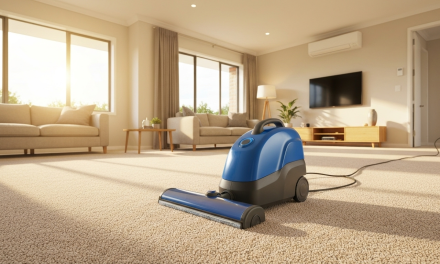The Do’s & Don’ts of Car Maintenance at Home

Cars are incredibly complex machines. From engine failures to tyre punctures, there are countless things that can go wrong and threaten your road safety. What’s more, unrepaired damage can also lead to long-term problems for your car, forcing you to spend a significant amount on future repairs and decreasing your vehicle’s resale value.
It’s vital to know how to perform basic DIY on your car. Thankfully, there are many tasks that can be easily performed from the comfort of your own garage. However, there are still a few important things to keep in mind when performing car maintenance at home. Keep reading to learn about some crucial do’s and don’ts when it comes to inspecting and repairing your car.
The Do’s of Car Maintenance
Work With Professional Mechanics
A vital part of car maintenance is knowing what you can and can’t do. While tasks like replacing your tyres or changing your engine oil can be done safely on your own, more complex jobs require the help of a professional mechanic. If you live in the area, find a mechanic in Tullamarine and keep them on speed dial in case your car experiences problems like an engine failure or malfunctioning brakes.
No matter how much time and space you have to work on things in your home, it’s still important to delegate certain repair tasks to a professional mechanic, as they have the tools and training to deal with more complicated issues.
Inspect Your Tyres Regularly
To ensure road safety, your car tyres must be in tip-top condition. Generally, most mechanics recommend replacing your tyres every five years or 40,000 kilometres, whichever comes first. However, you may need replacements earlier depending on your driving style and the conditions under which you drive.
Performing regular inspections on your tyres is the best way to determine whether or not they need to be changed. First, measure their tread depth. While the legal lower limit in Australia is 1.6mm, it’s recommended that you change your tyres once they reach a tread depth of 3mm. You should also look out for scratches, punctures and other forms of damage. When in doubt, it’s always safest to change your tyres. Safety should always come first on the road. Changing your tyres yourself is something perfectly suited for the home environment – and it’s much better in the quiet and space of your own space than on the side of the road in an emergency.
Stock all Essential Tools
If you plan to perform DIY car repairs, it’s vital to stock the necessary tools. While the equipment you own will depend on the type of repairs you feel comfortable doing, some garage staples include a torque wrench, a set of pliers, a car jack and some jack stands.
Besides owning the right equipment, it’s also important to know how to use it properly. Most newly bought tools will come with an instruction manual: don’t just throw it in the bin without reading it thoroughly. You’ll also find plenty of courses and explainers online about how to perform specific types of repairs. Before engaging in DIY maintenance, make sure to equip yourself with the necessary tools and knowledge to conduct your repairs safely and effectively.
The Don’ts of Car Maintenance
Rely on Car Jacks
Car jacks are an invaluable tool for changing your tires or performing other crucial maintenance tasks. However, a common mistake that many car owners make when working under their cars is to simply rely on jacks to offer the support they need to work beneath the vehicle. When performing tasks such as changing car oil, repairing your suspension or simply cleaning the undercarriage of your vehicle, make sure to always use jack stands.
A jack stand is a specialised tool that provides additional support after your car has been lifted by a jack. This device provides further protection if you’re working beneath your car to ensure that it doesn’t fall on you. Remember, your own personal safety should always be the number one priority when performing car maintenance at home.
Use the Wrong Fluids
There’s a long list of fluids that a car needs to function properly, including engine oil, coolant, brake fluid and transmission fluid. All these fluids need to be replaced on a regular basis, but at different time intervals. For example, engine oil should be changed every 5,000km to 10,000 km, while coolant can last you up to 50,000km to 100,000km before needing to be replaced.
Given the complexities of changing car fluids, it’s easy to make the mistake of using the wrong fluid. This can have disastrous consequences for your vehicle, including damaging key systems like your engine, brakes and transmission. This damage is sometimes irreparable. So, be extremely vigilant about adding the right fluids to certain components of your car.
Of course, there are some easier-to-access tanks that you can top up the fluids of yourself if you feel comfortable, like the engine oil, coolant and windscreen water. But when in doubt, bring your car to a professional mechanic.
Perform Complex Repairs Yourself
Lastly, don’t perform complex repairs yourself if you’re not an expert. Performing a task that’s above your pay grade, such as timing belt replacements, radiator repairs and suspension repairs, can lead to long-term damage to your car. This will force you to pay higher repair costs down the line and, in the worst-case scenario, permanently render your car unusable.
Earlier, we mentioned the importance of relying on professional mechanics when your car is in need of complex procedures. While this might initially cost more than DIY maintenance, working with professionals helps you avoid further damaging your car and spending more money in the future.
Key Takeaways
Regular maintenance is essential in order to keep your car in top shape. Driving a car that’s functioning as it should keeps you safe on the road, so make sure to follow a regular schedule when it comes to inspection and maintenance.
While anyone can learn to perform basic car repairs, there are some important do’s and don’ts to keep in mind when doing DIY maintenance. In this piece, we’ve gone over what we recommend taking care of at home and what you should leave for a professional in a workshop. Use what you’ve learnt today to keep your car in the best shape.






























